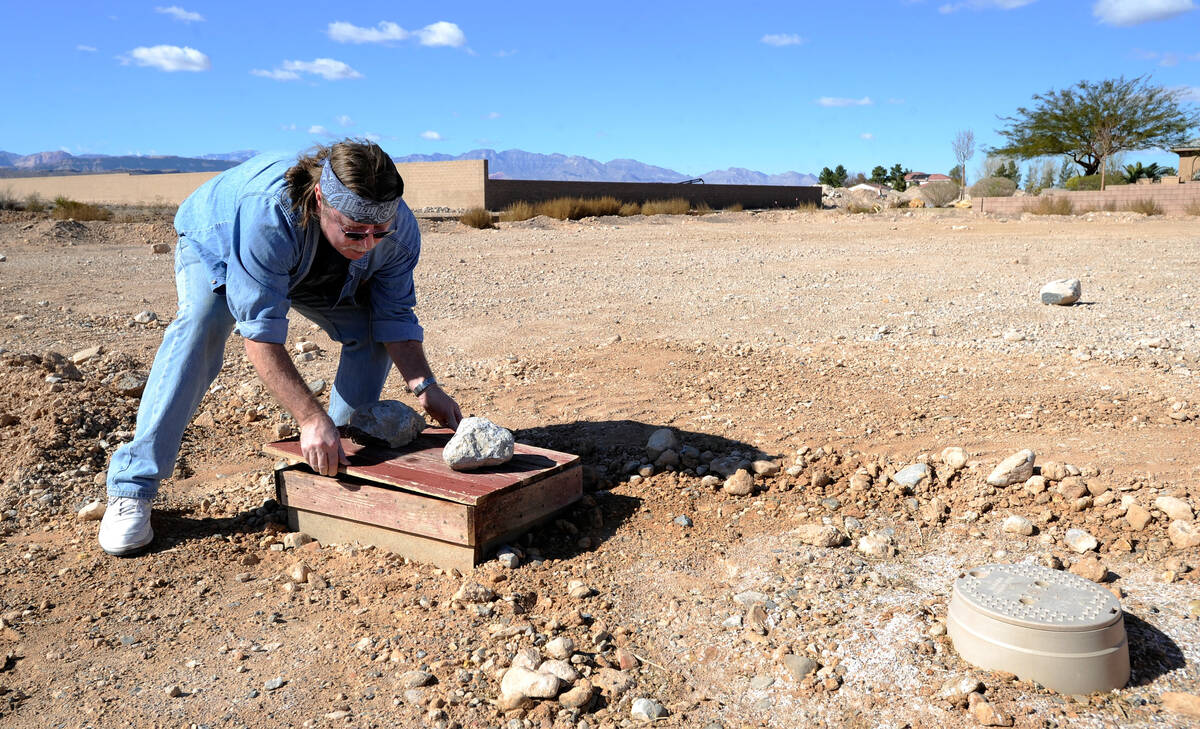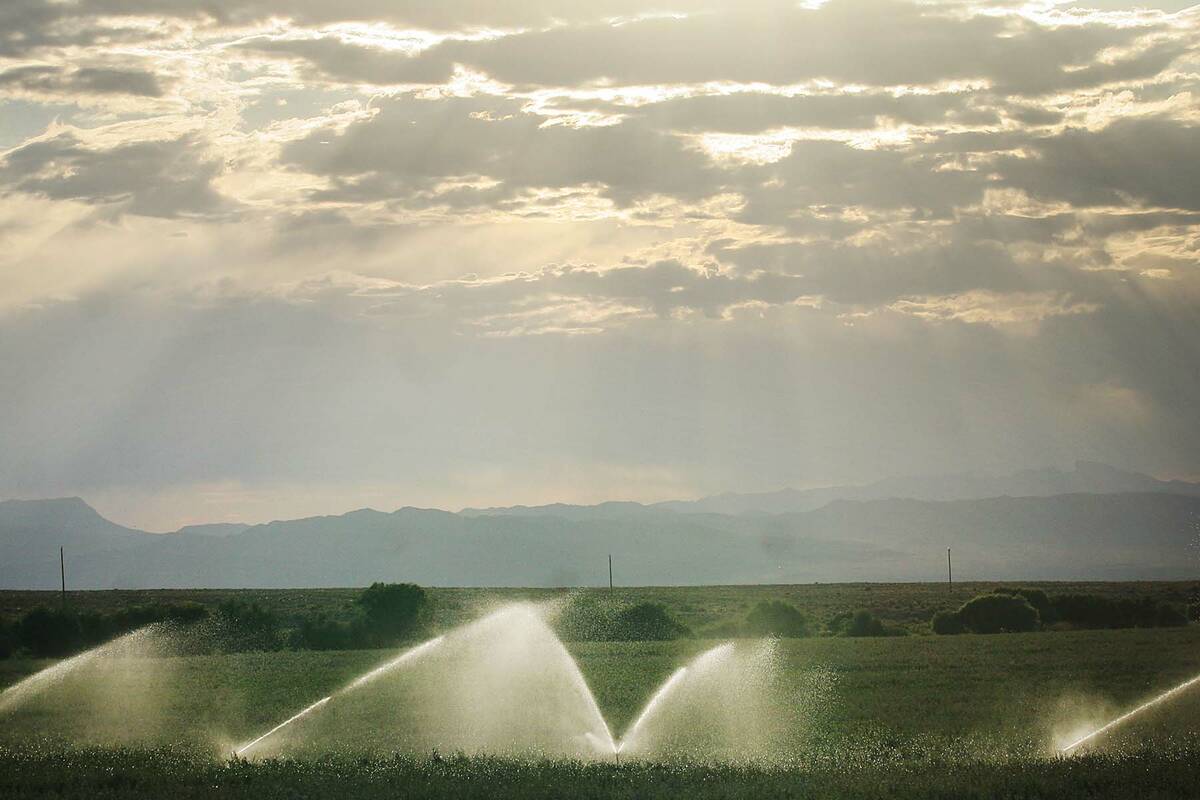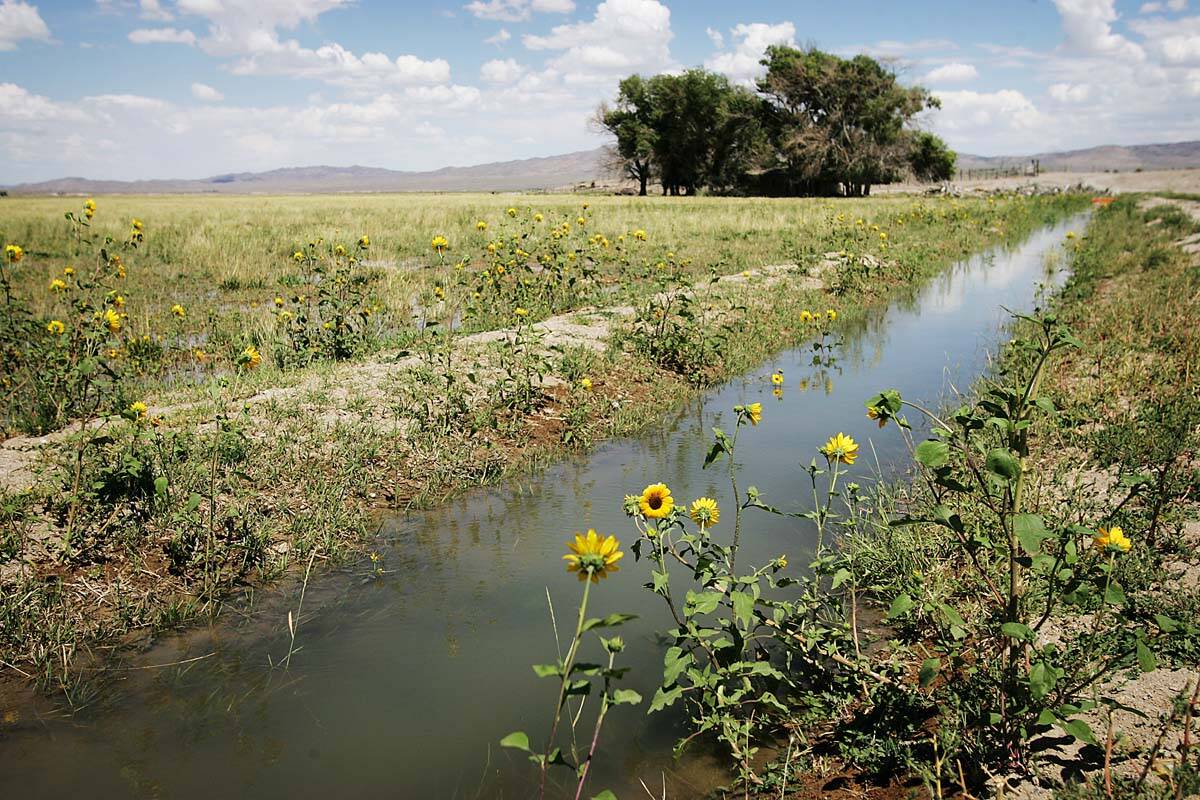Nevada may expand cash-for-water rights programs for imperiled regions
The Las Vegas Valley gets almost all its water from the Colorado River. But in the rest of the state, thousands of homes rely on groundwater wells, relying on a resource they have a right to use —but may soon not exist.
Nevada’s limited network of groundwater is found in 256 basins. In about half of them, residents, farmers and corporations hold rights to pump more water than is returned by melted snowpack and rain every year, according to The Nature Conservancy.
“Imagine you have a bathtub full of water, and every 10 years, one drop comes out of the faucet, but every day you take a bucket out,” said Rhett Larson, an Arizona State University professor who studies water law. “At the end of the week, you’re going to have an empty bathtub and you’re not going to be able to get a bucket out of it again for a couple of centuries. That’s how an aquifer works.”
That’s where voluntary water rights retirement programs come in. In groundwater basins that are over-appropriated or over-pumped, surrendering the right to pump groundwater permanently to the state is one way to ensure water levels don’t fall too low, preserving the drinking water of homes that rely on pumping.
In a meeting Friday, Nevada lawmakers considered whether the Legislature should consider increasing state funding or matching federal funding to expand those programs to prolong water resources. Similar efforts exist in Kansas and Colorado — and water managers from both states shared the benefits of voluntary retirement programs to Nevada’s committee.
Advocates and scientists stressed that protecting water is critical in a state with areas where water users have claims for 350 percent of the maximum amount of water that can be used annually without further strain.
“Impacts of groundwater overuse are already being seen in some places in Nevada,” said Laurel Saito, The Nature Conservancy’s Nevada water strategy director. “Policy strategies may be helpful for managing and sustaining groundwater-dependent ecosystems in Nevada, including having a toolbox of options to resolve conflicts with existing water rights holders.”
Too much interest, not enough funds
Pilot programs in the Silver State have already been wildly successful with funds from the American Rescue Plan Act.
Within the Central Nevada Water Authority and Humboldt River Basin Water Authority, efforts to secure water rights in Diamond Valley will translate to a reduction in pumping equivalent to a third of the perennial yield. Diamond Valley, a farming community mostly in Eureka County, is the only basin the state engineer has deemed a “critical management area.”
While the program has been successful, there wasn’t enough money to meet overwhelming interest, Central Nevada Water Authority Executive Director Jeff Fontaine said. While giving up on farming by surrendering water rights is not an easy decision, he said many farmers recognize the dire need.
“Farmers want to farm,” Fontaine told lawmakers. “But a lot of them see the writing on the wall, and this is an opportunity for them to make an important decision that is potentially life changing for them and their families.”
Peter Stanton, who leads the Walker Basin Conservancy based in Mineral County, said his nonprofit’s longstanding program to help farmers retire water rights has had the benefit of time, unlike the one in Central Nevada. It generally takes upward of six years to go through the process, and Fontaine’s program only had about 11 months.
Now that there is so much interest drummed up in groundwater rights retirement, Stanton implored the legislative committee to capitalize on it and make more investments.
“Through thoughtful action over the coming months, our leaders and policymakers can ensure that we don’t squander this moment,” Stanton said. “We can firmly put ourselves on a trajectory towards sustainable water management — and that requires putting folks on the ground building these relationships in critical areas throughout the state.”
Las Vegas takes separate action
In the Las Vegas Valley, the Southern Nevada Water Authority’s Groundwater Management Program similarly intends to reduce the amount of people that pump groundwater from a well instead of connecting to the city’s water system.
Las Vegas’ groundwater basin is over-pumped when compared to perennial yield and over-appropriated, according to the Nevada Division of Water Resources’ 2023 statewide assessment.
However, the water table is closely measured. When necessary, the water authority will inject water to the Colorado River to stabilize the groundwater level and store it, spokesman Bronson Mack said. The last time this happened was in 2011.
“It’s not as if we’re seeing significant drawdowns in the aquifer like they saw back in the late 60s and 70s,” he said.
There are about 4,300 groundwater wells in the valley, Mack said, which the water authority incentivizes the removal of. It will cover up to 85 percent of the cost to do so if there’s a connection nearby, funded by fees the agency charges well owners. This primarily happens when a well fails and homeowners cannot afford to move it or drill deeper.
Contact Alan at ahalaly@reviewjournal.com. Follow @AlanHalaly on X.



















